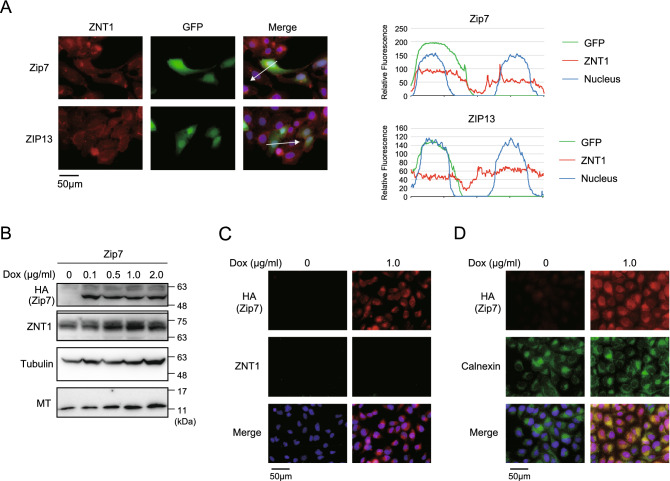Figure 4.
Expression alteration of intracellularly localized ZIPs does not substantially alter ZNT1 and MT expression. (A) Transiently expressed mouse Zip7 and human ZIP13 did not enhance cell-surface ZNT1 expression. U2OS cells were transiently transfected with an IRES-GFP expression plasmid harboring Zip7-HA or ZIP13-HA cDNA and then examined as described in Fig. 1. Merged images with DAPI staining are also shown, and the right graphs show the relative fluorescence intensity determined semi-quantitatively using line-profile analysis. (B,C) Expression of ZNT1 and MT was only slightly altered by Dox-induced expression of Zip7 in MDCK cells. MDCK cells stably expressing Zip7 were cultured with the indicated concentrations of Dox for 24 h in (B) or with 1.0 μg/mL Dox in C, and ZNT1 and MT expression levels were examined through immunoblotting (B) and immunofluorescence staining (C). In (B), tubulin was used as the loading control. (D) Confirmation of ER localization of induced Zip7. MDCK cells were cultured with or without 1.0 μg/mL Dox for 24 h and then immunofluorescence staining was performed; concurrent immunostaining of the ER marker calnexin was used to assess Zip7 subcellular localization. Each experiment was performed at least thrice, and representative results from independent experiments are shown.

